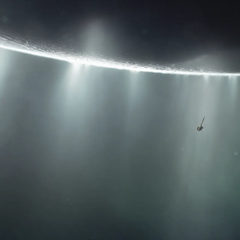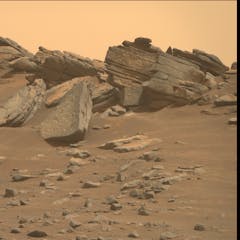
Articles on NASA
Displaying 1 - 20 of 472 articles

Starliner is only the second vehicle to launch astronauts from US soil since the retirement of the shuttle in 2011.

The Starliner’s planned crewed test on May 6, 2024, was scrubbed after a technical issue with the rocket taking it up to orbit.

New ideas will be key to making the mission happen after a report criticised its timescale and cost.

It’s not easy to collect rocks on a budget when the rocks are 140 million miles away.

The Perseverance rover has arrived at what’s thought to be an ancient shoreline on Mars.

There’s anxiety among space scientists following Nasa’s decision to rethink sample return mission from Mars.

Saturn’s moon Enceladus has geysers shooting tiny grains of ice into space. These grains could hold traces of life − but researchers need the right tools to tell.

Space exploration is not a waste of resources, but a source of technological and medical advances, a tool for climate monitoring and a source of educational inspiration for youth.

With wealth, charm and tactful leadership, John F. Kennedy set the standard for working toward the common good and decency in public discourse

A type of eclipse is crucial for measuring what’s in the atmospheres of planets orbiting distant stars.

Now out in space for more than two years, the James Webb Space Telescope is a stunningly sophisticated instrument.

An instrument on the Europa Clipper mission might be able to detect biological cells from space.

Europa Clipper will contain a plaque that celebrates humanity’s relationship with water and a decades-old tradition of searching for life outside Earth.

The eclipse will allow scientists to get rare measurements of the Sun’s atmosphere.

Years of research about the people who work in the federal government finds that most of them are devoted civil servants who are committed to civic duty without regard to partisan politics.

Eclipses are rare, fantastic celestial events. Here’s how educators can help visually impaired students enjoy eclipses alongside their sighted peers.

Giant helium balloons are a cheap, more environmentally friendly alternative to rocket launches – and you get the satellite back.

Determining whether or not life exists on another planet is an extraordinarily complicated – and expensive – scientific endeavor.

The next generation of spacesuit needs to do more than simply protect an astronaut from the vacuum of space.

Only about 12kg of oxygen is produced per second on Europa, which is on the lower side of previous estimates from about 5kg to 1,100 kg per second.
